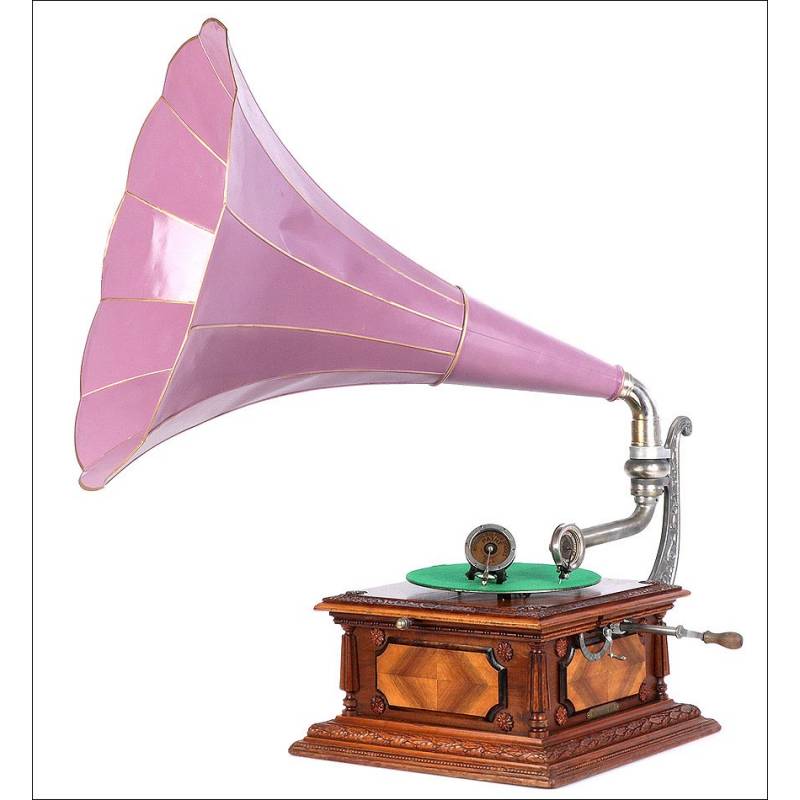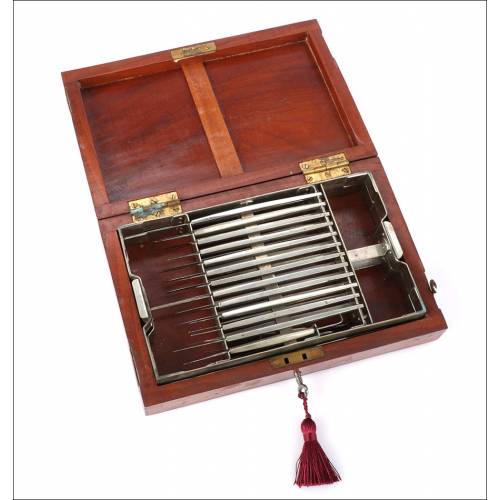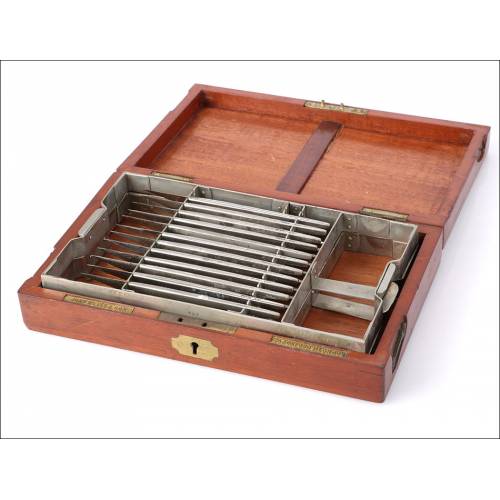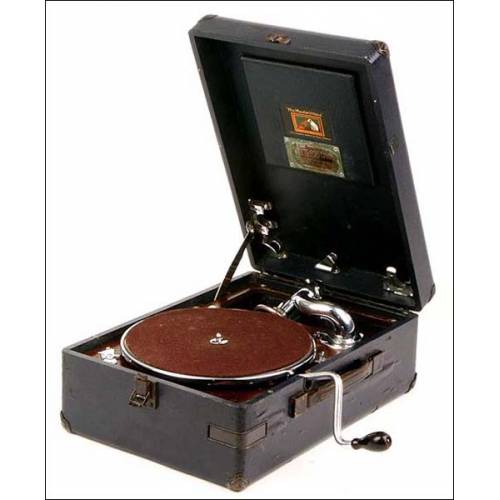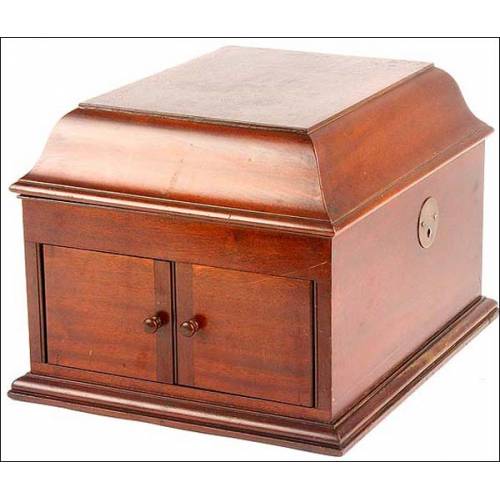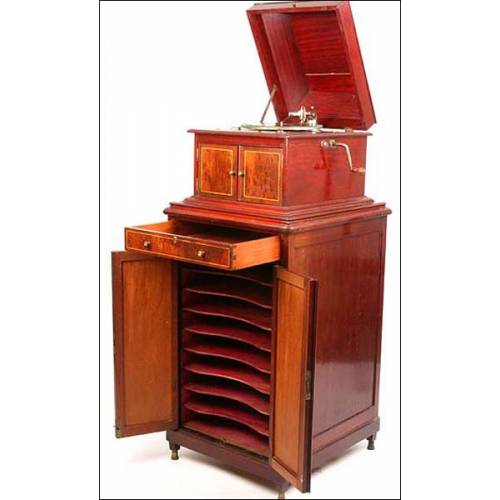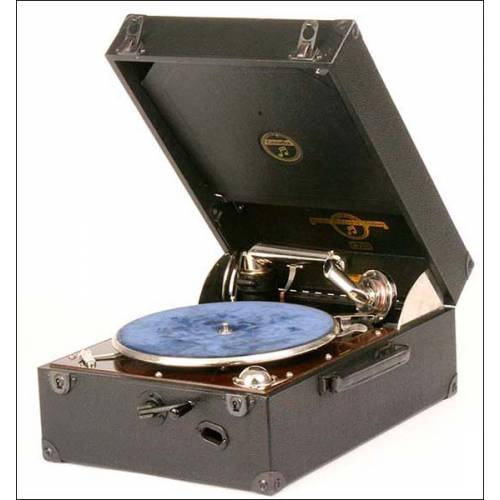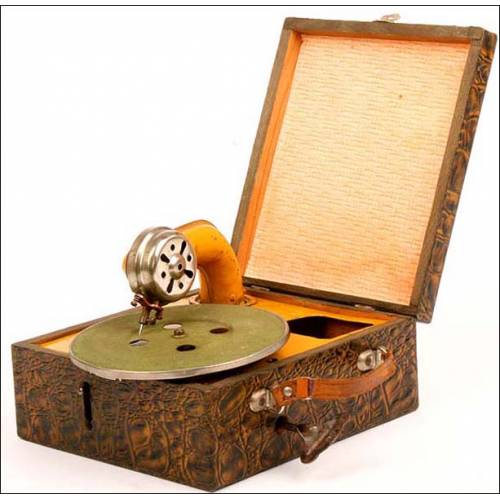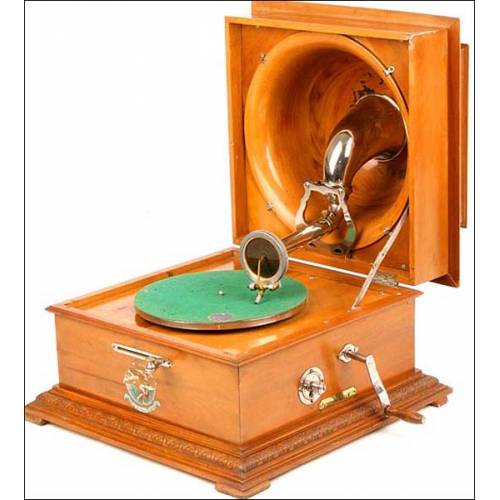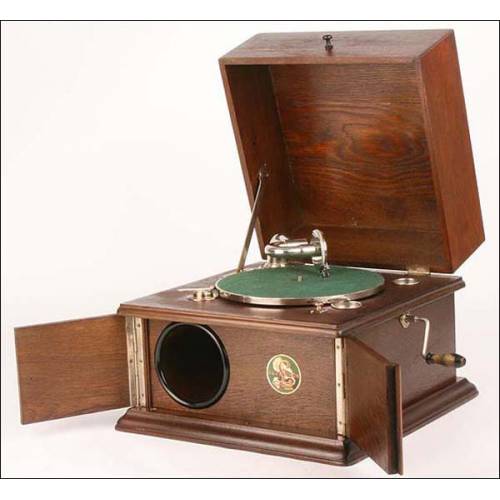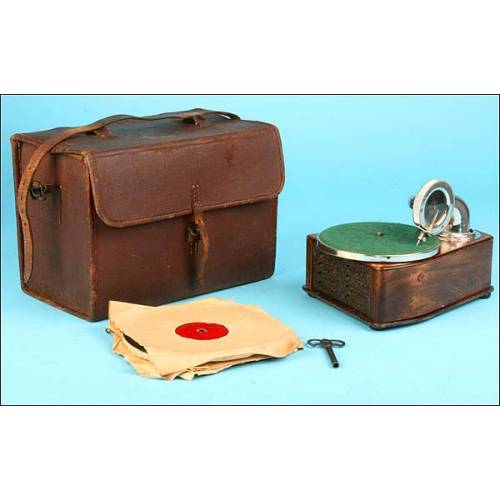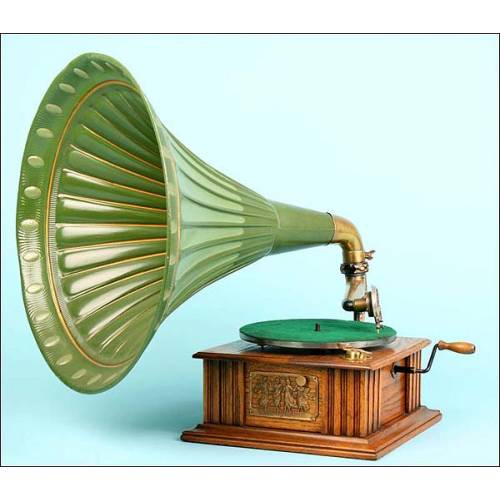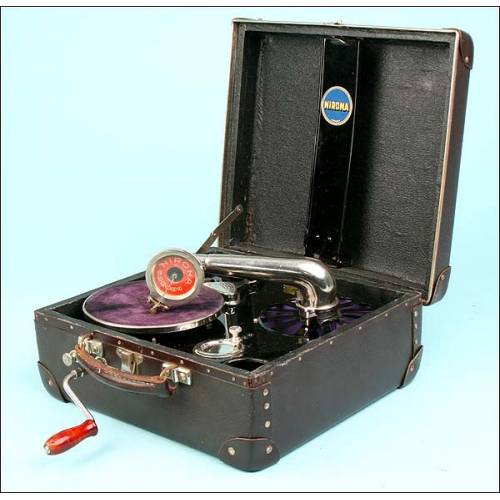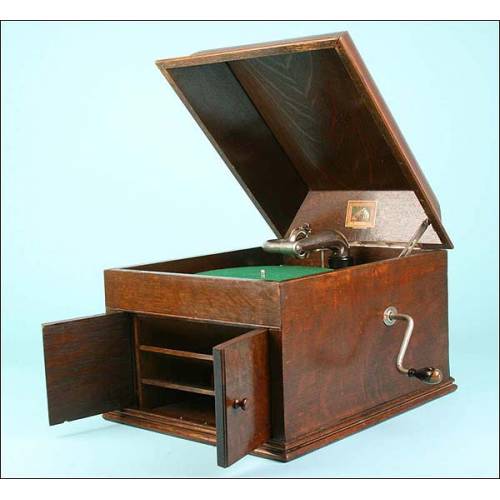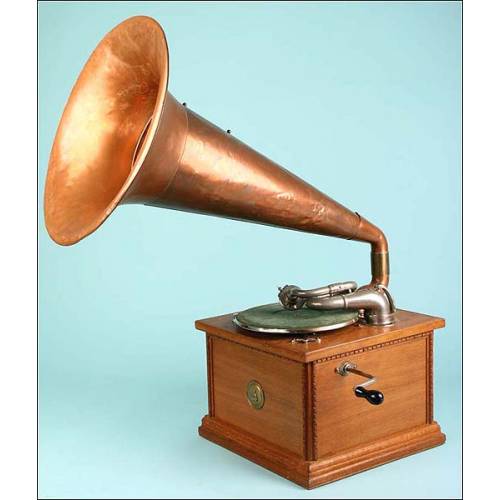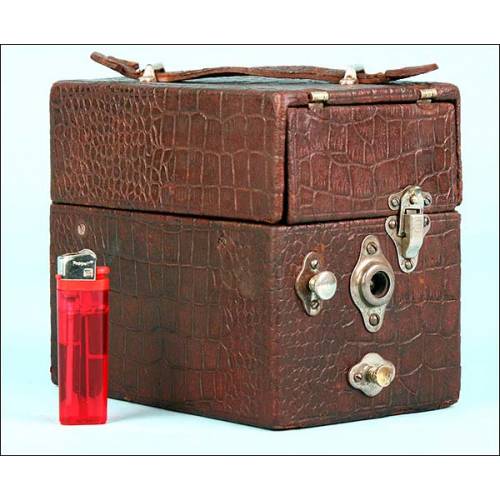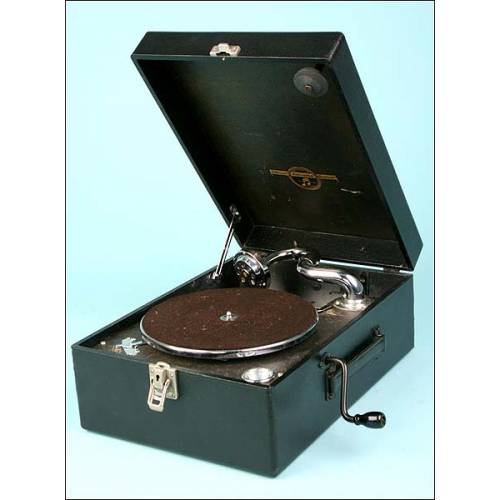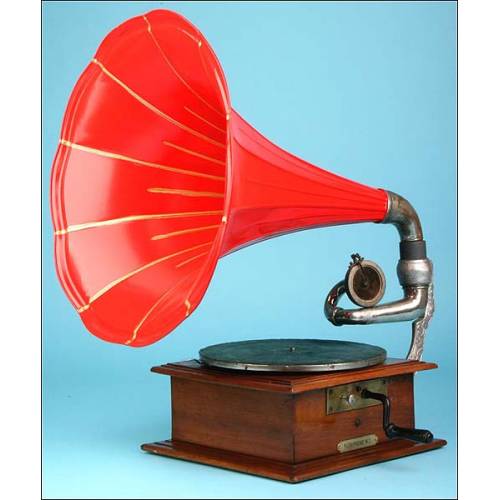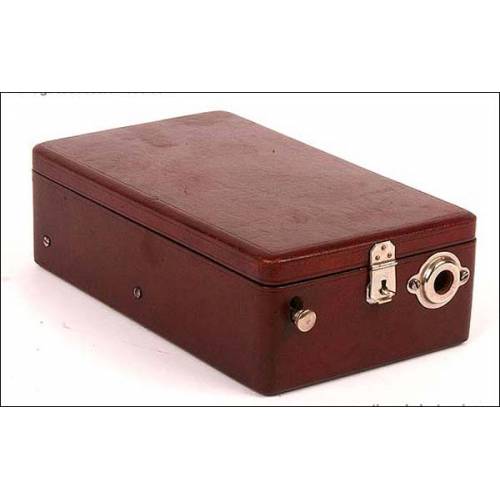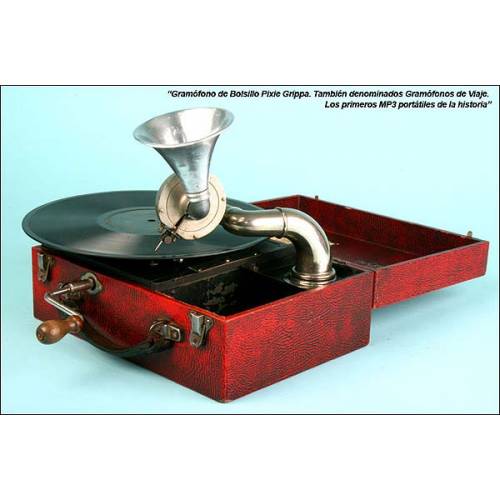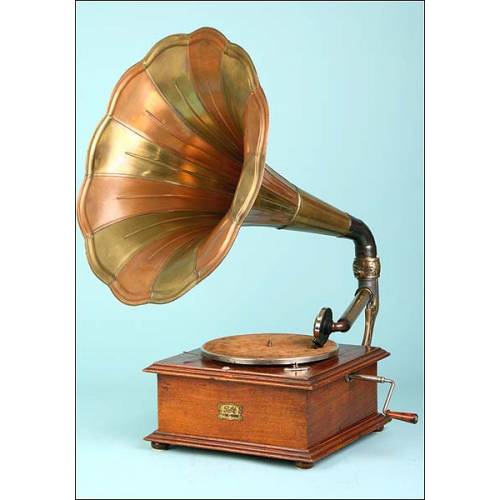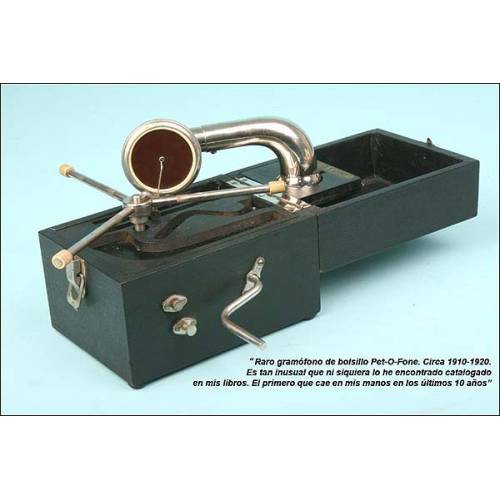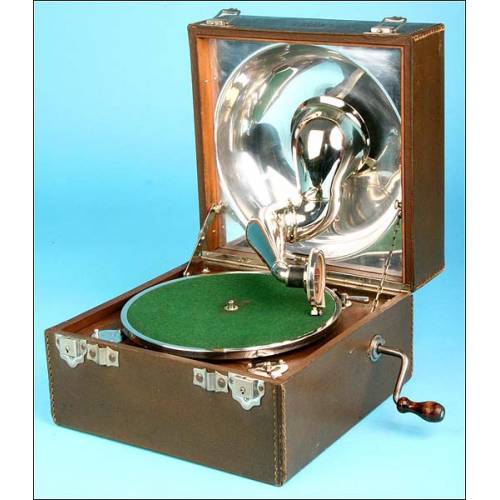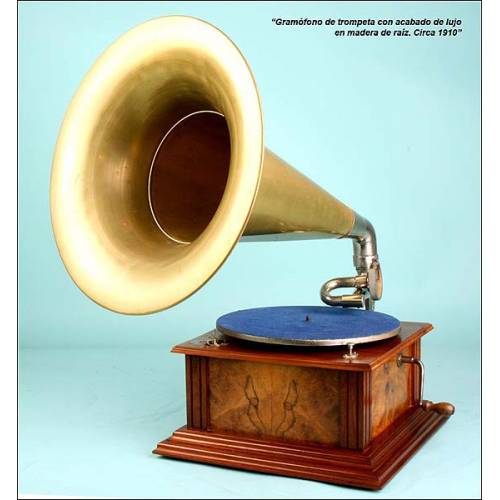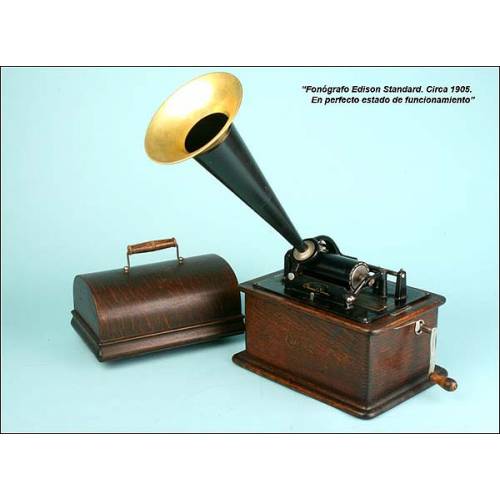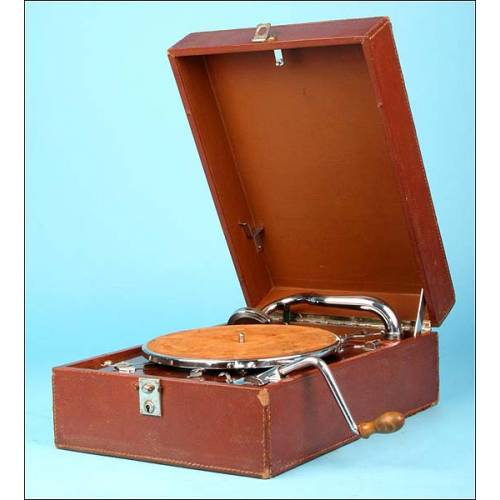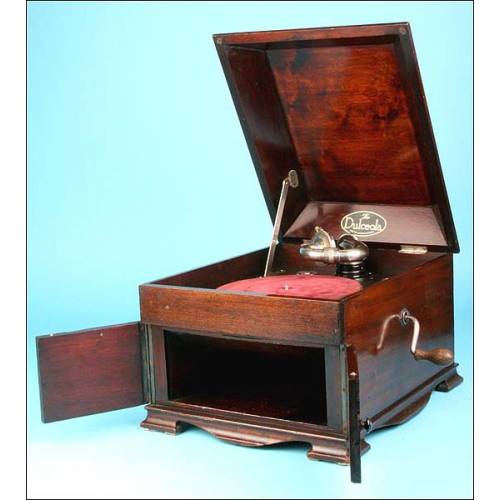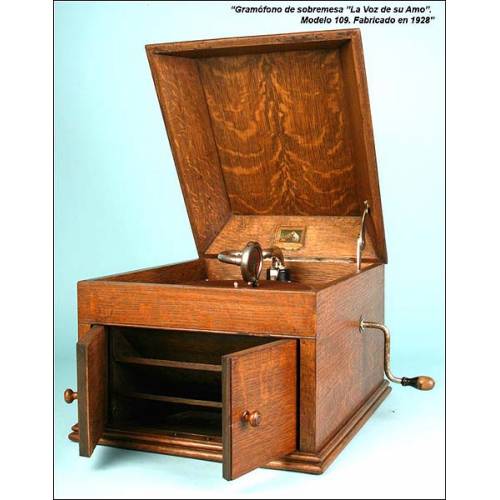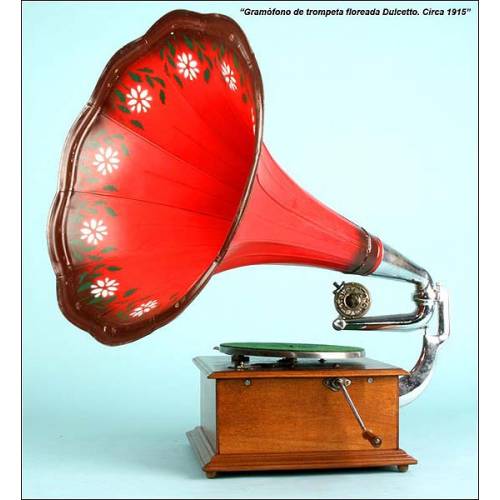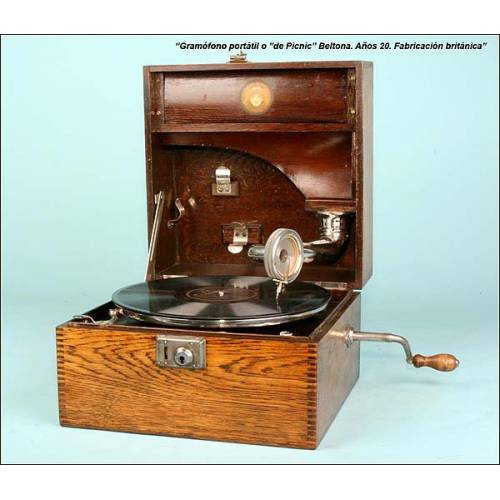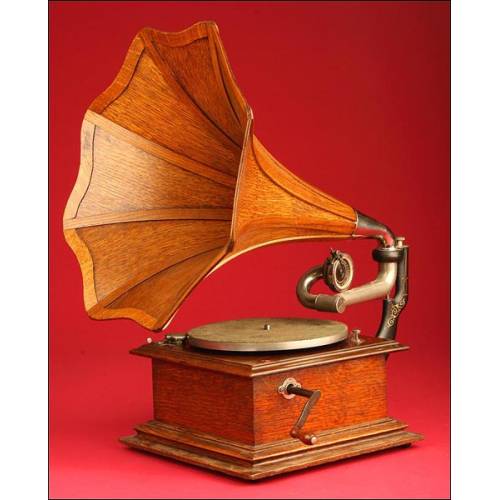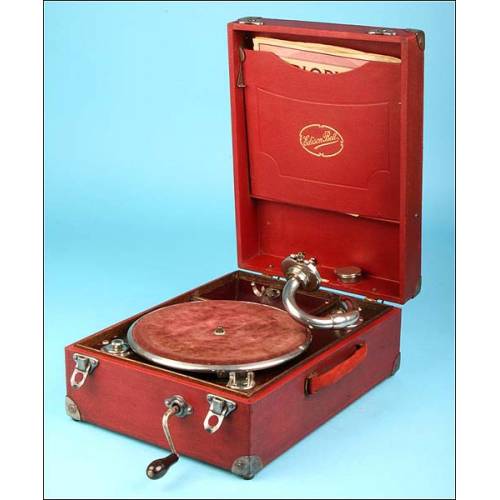C-542
Antique Pathephone 12 Gramophone with two reproducers. France, 1910.
Beautiful antique Pathephone 12 gramophone in great condition. Fully restored and ready to use. With fantastic sound.
Sold!
Antique Pathephone 12 gramophone with two reproducers, made in France in 1910 and in very good condition. As well as for its evident beauty, this gramophone stands out for its excellent working order. The motor has been carefully cleaned and tuned so today it works really well and sounds great. The two reproducers are interchangeable: one of them plays needle records and the other must be used to play Pathe records. The gramophones box bears a riveted brass plate at the cranks side, where we can see the engraved model name: PATHEPHONE Nº 12 The gramophones box is an amazing solid-wooden piece which combines different types of wood. It is made mainly of solid mahogany wood with side light-colored walnut wood at the sides. The molded base is decorated with hand-engraved vegetal borders and there is another engraved border (with symmetrical motifs) at the top. The wood bears a warm French-polish finish that enhances the gorgeous color and veneer of the different woods. The silvery-metal elbow that holds the arm with the horn and the reproducer bears a decorative motif too. The metal is in very good condition. Last but not least, the horn is made of enameled metal sheet and has been fully restored to regain its original splendor. The inherent beauty of this antique Pathephone 12 gramophone with two reproducers can only be matched by its excellent sound. It is an exclusive piece that will shine in any dining room. Measurements: Box: Side: 16.6 in / 45 cm. Height: 8.4 in / 21 cm. Horn: Length: 31.6 in / 79 cm. Mouths Width: 24 in / 60 cm.Pathé Fréres - History The company was founded as Société Pathé Frères in Paris, France in 1896, by the four brothers Charles, Émile, Théophile and Jacques Pathé. During the first part of the 20th century, Pathé became the largest film equipment and production company in the world, as well as a major producer of phonograph records. Charles Pathé had helped open a gramophone shop in 1894 and established a phonograph factory at Chatou. Having decided to expand the record business to include film equipment, the company expanded dramatically. To finance its growth, the company took the name Compagnie Générale des Établissements Pathé Frères Phonographes & Cinématographes. In 1902, Pathé acquired the Lumière brothers' patents; by 1909, they had built more than 200 movie theaters in France and Belgium. By the following year they had facilities in Madrid, Moscow, Rome and New York City plus Australia and Japan. Prior to the outbreak of World War I, Pathé dominated Europe's market in motion picture cameras and projectors.

